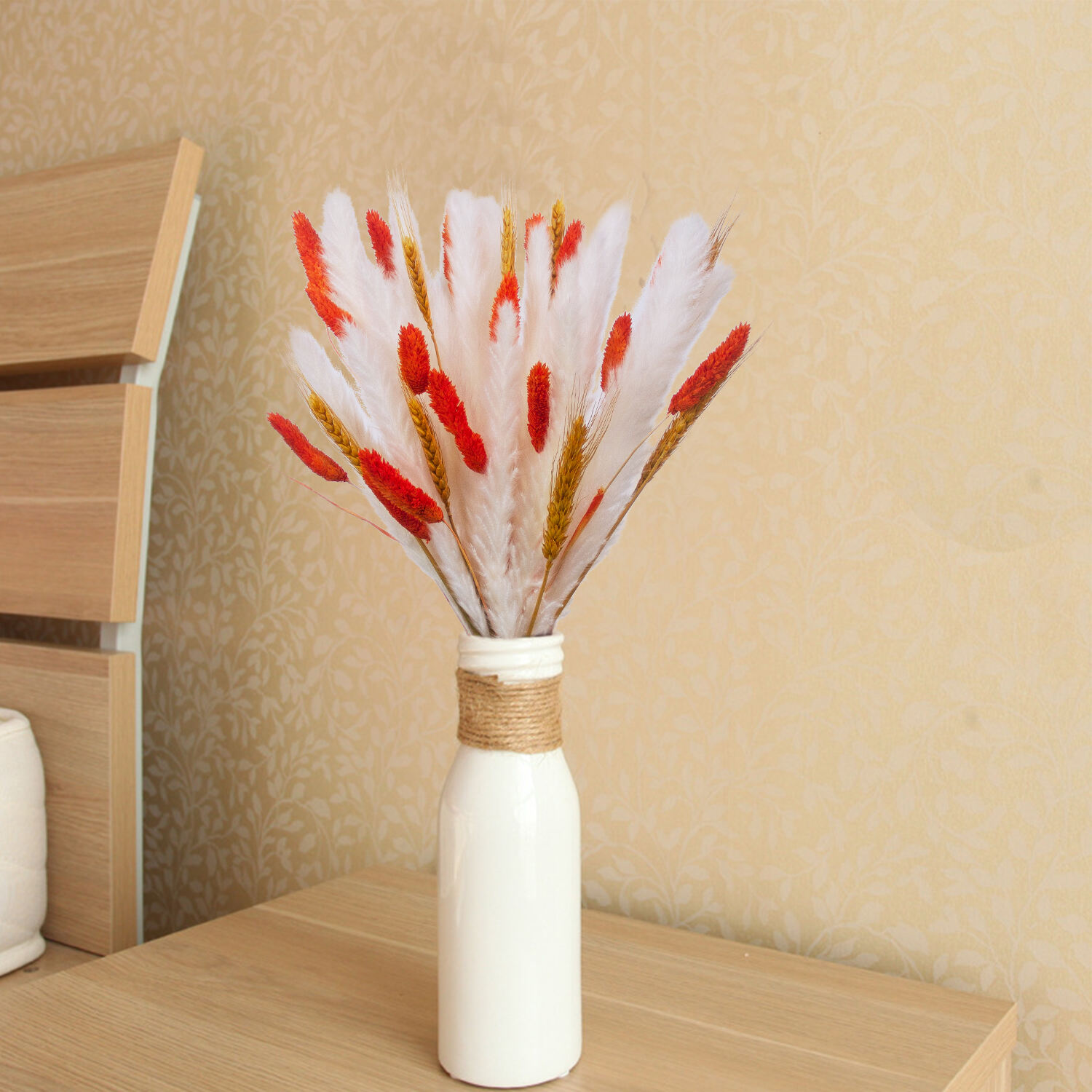
Explore our extensive selection of dried flowers wholesale including pampas grass and preserved roses Our preserved flowers are perfect for creating stunning arrangements that last beautifully in any setting
The floral industry is witnessing a remarkable transformation with preserved flowers taking center stage in distribution channels. These botanically-treated blooms have revolutionized how distributors and resellers approach their business models, offering unprecedented advantages in storage, handling, and profit margins. As natural flowers continue facing challenges with short shelf lives and delicate handling requirements, preserved flowers emerge as a game-changing solution that's reshaping the entire supply chain.
In today's competitive market, preserved flowers represent more than just an alternative to fresh blooms - they embody a sustainable, profitable, and versatile product category that's opening new opportunities for business growth. Their ability to maintain pristine appearance for months or even years while requiring minimal maintenance has captured the attention of distributors and resellers worldwide.
One of the most compelling benefits preserved flowers offer to distributors is their remarkable longevity. Unlike fresh flowers that typically last only 5-7 days, preserved flowers maintain their beauty for 6-12 months or longer under proper conditions. This extended shelf life dramatically reduces waste, a significant cost factor in traditional floral distribution.
Distributors can now maintain larger inventories without fear of spoilage, allowing them to better meet sudden spikes in demand or large-scale orders. The reduction in waste not only improves profit margins but also aligns with growing environmental consciousness among consumers.
Preserved flowers have transformed logistics operations for distributors. These treated blooms don't require refrigeration or specialized transportation conditions, significantly reducing operational costs. Storage becomes simpler and more cost-effective, as preserved flowers can be kept at room temperature in normal warehouse conditions.
The durability of preserved flowers also means fewer damaged products during shipping, leading to higher customer satisfaction and fewer returns. This resilience enables distributors to expand their geographical reach without concerns about product degradation during longer transit times.
Preserved flowers enable distributors to expand their product offerings beyond traditional fresh arrangements. They can create exclusive collections for different seasons without worrying about flower availability or seasonality. This versatility allows for creative merchandising strategies and year-round consistency in product offerings.
The ability to maintain a diverse inventory of preserved flowers means distributors can cater to various market segments - from luxury home décor to corporate installations, wedding planning, and retail gift shops. Each segment represents a distinct revenue stream with its own growth potential.
The unique characteristics of preserved flowers justify premium pricing strategies. Their longevity and low maintenance requirements make them an attractive investment for end consumers, allowing distributors to maintain healthy profit margins. The perceived value of preserved flowers often exceeds that of fresh flowers, especially when considering their extended lifespan.
Distributors can develop tiered pricing models based on factors such as flower variety, arrangement complexity, and customization options. This flexibility in pricing strategy helps maximize revenue while meeting diverse market demands.

Working with preserved flowers simplifies procurement planning for distributors. The longer shelf life means orders can be placed in larger quantities, potentially securing better prices from suppliers. Seasonal fluctuations in availability and pricing become less of a concern, allowing for more stable and predictable inventory management.
Distributors can maintain optimal stock levels without the pressure of rapid turnover that comes with fresh flowers. This improved inventory control leads to better cash flow management and reduced operational stress.
Preserved flowers offer unprecedented consistency in quality and appearance. Unlike fresh flowers, which can vary significantly based on growing conditions and seasonality, preserved flowers maintain uniform characteristics. This consistency is particularly valuable for distributors serving corporate clients or large-scale events where predictability is essential.
The stable nature of preserved flowers also simplifies quality control processes. Distributors can implement standardized inspection procedures without the time pressure associated with fresh flowers, ensuring consistent product quality across all shipments.
The stability of preserved flowers allows distributors to develop innovative custom solutions for specific market needs. From branded corporate gifts to specialized retail displays, the possibilities for product development are extensive. Distributors can work with designers to create signature collections that differentiate their offerings in the market.
The ability to experiment with different combinations and arrangements without time constraints enables creative product development. This innovation potential helps distributors establish unique market positions and build strong brand identities.
Preserved flowers are particularly well-suited for e-commerce operations. Their durability during shipping and consistent appearance make them ideal for online sales channels. Distributors can leverage digital marketing platforms to showcase their preserved flower collections, reaching broader audiences without geographical limitations.
The predictable nature of preserved flowers also simplifies inventory management for online sales, enabling accurate stock levels and reduced overselling risks. This reliability enhances customer satisfaction and supports the growth of digital sales channels.
Preserved flowers can maintain their appearance and quality for 6-12 months or even longer when stored properly in a dry environment at room temperature, away from direct sunlight and excessive humidity. Some premium preserved flowers can last several years with proper care.
Preserved flowers should be stored in a clean, dry environment with temperatures between 15-25°C (59-77°F). Avoid exposure to direct sunlight, high humidity, and extreme temperature fluctuations. Proper packaging can provide additional protection during storage and transportation.
Yes, preserved flowers can be carefully handled and arranged after treatment. However, it's important to work with experienced designers who understand the unique properties of preserved flowers. While they maintain flexibility, they should be handled with care to prevent damage to the preservation treatment.
Preserved flowers contribute to sustainability through reduced water consumption, eliminated need for refrigeration, decreased transportation frequency, and minimal waste generation. Their long lifespan means fewer replacements are needed, resulting in a smaller environmental footprint compared to fresh flowers.